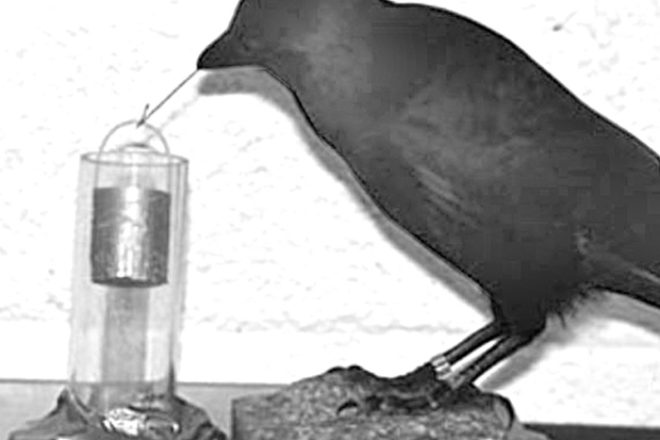Science Snippet: New Caledonian Crow
- Share
- Tweet
- Pin
- Share

The New Caledonian Crow (Corvis moneduloides) has taken its place alongside chimps as another natural non-human tool-maker. Living on New Caledonia, the largest island in an archipelago off the northeast coast of Australia, these crows use tools to pry grubs and insects out of holes in trees. Scientists have watched these crows, with their forward-looking eyes and moderate size beaks, fashion hooks out of pieces of straight garden wire and use such “tools” to retrieve baskets of bait from clear plastic tubes. These baskets were placed well beyond the reach of their beaks. Do all crows make tools? No, but the Hawaiian Crow (Corvis hawaiiensis) is as adept at tool use as the New Caledonian species. This crow is extinct, although a captive population of 130 of them is sustained by the San Diego Zoo. Scientists studying them found that they instinctively used tools to retrieve food just beyond the reach of their beaks. When the experimenters placed food (pieces of fresh liver or insect grubs) at the bottom of holes in small logs, the crows ran around the aviary picking up sticks in their beaks, which they used to probe the holes and retrieve the food. If the stick was too long, the crow shortened it, or if the stick was unacceptable for some reason, it was discarded. The zoo plans to release these smart crows in Hawaii this year in the hope they will repopulate the island. (Science, Aug. 9 issue; Rutz et al, 2016, Nature, Sept. 15, p. 403; other sources)
